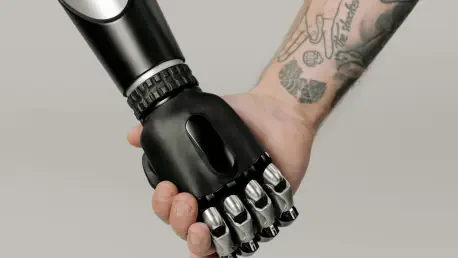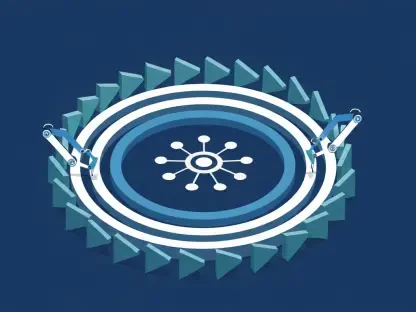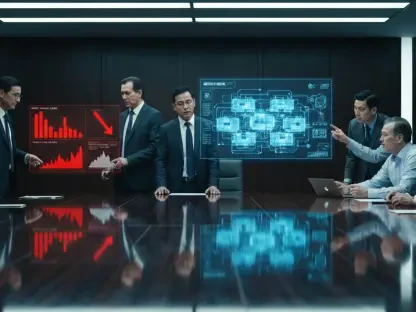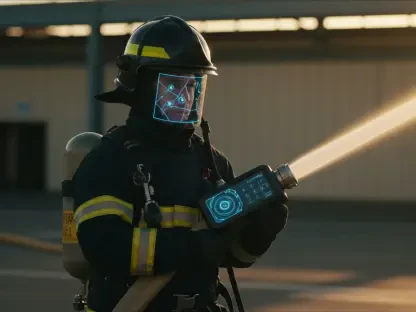In today’s dynamic and ever-evolving technological landscape, robotic navigation systems are crucial for enabling autonomous operations across various applications. However, traditional navigation systems often struggle in complex, dynamic environments, presenting a critical challenge. Addressing this limitation, researchers have integrated human-inspired reasoning into robotic navigation, leading to groundbreaking advancements. This review delves into the technological evolution, key features, and significant applications of this innovation, demonstrating its potential to revolutionize multiple sectors by overcoming traditional limitations.
Emergence and Core Principles
Human-inspired robot navigation fundamentally shifts how robots perceive and interact with their surroundings. By mimicking human reasoning processes, robots can navigate diverse environments more effectively. This technology leverages cognitive processes, enabling robots to quickly discern feasible paths, akin to human intuition. The integration of this methodology marks a significant step forward, contributing broadly to artificial intelligence and robotics by overcoming longstanding navigation challenges like unpredictability and narrow pathways.
The emergence of human-inspired navigation within the broader technological landscape highlights its importance. This approach is particularly beneficial in scenarios requiring rapid adaptability and decision-making, where traditional navigation systems often falter. By incorporating human-like reasoning, robotic systems achieve greater autonomy and efficiency, signaling a noteworthy advancement in overcoming conventional navigation limitations.
Technological Components and Features
Hierarchical Planning Framework
At the core of human-inspired robot navigation is the hierarchical planning framework, a system designed to improve navigation efficiency by analyzing environments systematically. This structure enables robots to maintain consistent planning times, essential for dynamic scenarios. The framework involves two stages: rapid route identification through learning-based approaches and further trajectory optimization using established methods. This combination ensures stable navigation performance in varied conditions.
The hierarchical framework’s significance lies in its ability to fuse speed with stability, crucial for real-world applications. By improving predictability and operational reliability, this framework empowers robots to execute complex tasks with heightened efficiency, exemplifying the harmonious fusion of modern learning techniques and classical planning methods.
Deep Learning and Classical Optimization Fusion
A standout feature of human-inspired navigation is the integration of deep neural networks with classical optimization techniques. This fusion harnesses the strengths of both methods, addressing weaknesses inherent in standalone approaches. Deep learning excels in processing complex data but lacks the reliability of classical methods. In contrast, classical techniques provide stability but struggle with initial conditions.
Through this integration, robotic systems achieve improved performance by generating reliable and efficient spatiotemporal trajectories. By refining neural network outputs, these systems excel in navigating dynamic and cluttered environments, surpassing traditional methodologies and setting a new precedent in robotic navigation performance.
Innovations and Developments
Recent advancements in human-inspired navigation showcase a trajectory filled with innovative breakthroughs. By enhancing robotic adaptability, researchers have paved the way for more intricate operations. The trend emphasizes refining simulation fidelity and perception system robustness, ensuring seamless real-world application. These innovations highlight a promising direction for future developments.
The field continues to evolve, with ongoing research focusing on bridging the gap between simulations and real-world conditions. Efforts target expanding robotic frameworks’ versatility and accuracy, fulfilling the increasing demand for reliable autonomous operations in various sectors, from industrial to everyday applications.
Practical Use Cases
Human-inspired robot navigation has found diverse applications across several industries. In search and rescue operations, robots equipped with this technology can efficiently navigate unpredictable terrains, potentially saving lives. Similarly, in logistics, these robots optimize warehouse operations through improved pathfinding accuracy and speed. Environmental exploration also benefits, with robots conducting complex fieldwork in inaccessible areas.
Notable implementations demonstrate the technology’s transformative impact. By enabling robots to perform tasks previously considered challenging or impossible, human-inspired navigation marks a turning point in autonomous systems’ capability, reflecting its far-reaching implications for modern industry.
Challenges and Exploration
Despite its potential, human-inspired navigation faces several challenges. Technically, ensuring robust performance in all scenarios requires overcoming intricacies related to unpredictable environments. Additionally, regulatory considerations and market adaptation present obstacles impeding wider adoption. Addressing these issues is critical to fully realizing this technology’s potential.
Researchers are actively working to address these limitations, focusing on advancing core technologies and improving regulatory frameworks. Overcoming these challenges will be essential in unlocking deeper integrations of this innovative approach, ensuring its durability and effectiveness in real-world settings.
Prospects and Future Directions
Looking ahead, the future of human-inspired robot navigation is filled with potential advancements. Expectations include breakthroughs that will enhance system robustness, efficiency, and adaptability. Continued research efforts focus on refining current models, incorporating more complex cognitive processes, and expanding usage across various domains.
By anticipating new challenges and innovating solutions, the field stands ready to lead a transformation in robotic capabilities. Future advancements promise to expand the boundaries of what is achievable, opening new possibilities for autonomous operations across increasingly diverse scenarios and sectors.
Assessment and Summary
The review of human-inspired robot navigation reveals a technology poised to redefine autonomous systems. By merging human reasoning with advanced learning techniques, this innovation addresses critical limitations in traditional navigation methods. Although challenges remain, the ongoing research and promising developments suggest significant future advancements.
In summary, human-inspired navigation stands as a pivotal advancement with far-reaching implications. Its current capabilities combined with considerable potential for enhancement position it as a transformative force in the realm of robotics, shaping future innovations and expanding possibilities for autonomous technologies.









